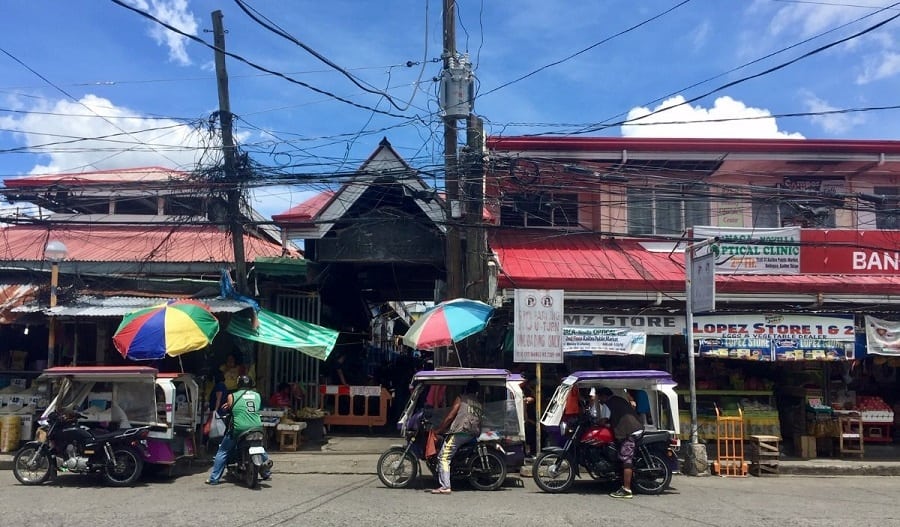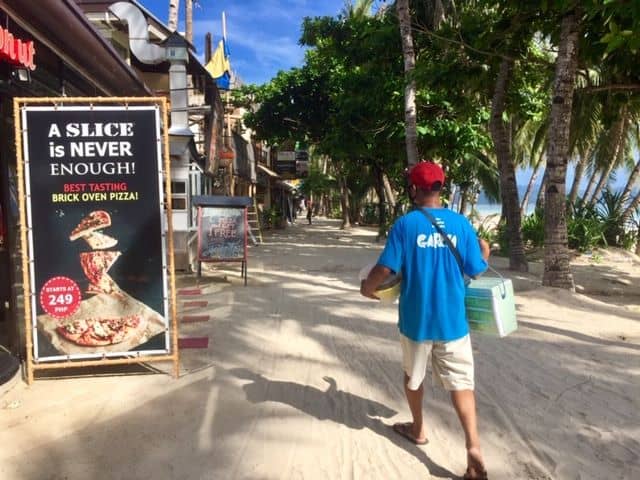Last Updated on October 27, 2024 by Ellen
When you operate with reductions, you learn how to do more with less. The mentality of ‘make the best of what you’ve got’ seems to automatically kick in when people go into survival mode.
I’ve met many resourceful Filipinos who are determined to work around the coronavirus pandemic to make it.
Resourceful Filipinos
Sales
Dried fish, fresh fish. Fried bananas, fried rice rolls.
Homemade river crab cakes, ice candy, and jams. Home grown seedlings and roosters.
Planter pots, mulberry trees, used clothing (ukay ukay).
Motorbikes, digital cameras, used boat engines.
Sales of homegrown and homemade goods, and used items big and small, have always been common in the Philippines. But it is happening more as people look for ways to generate some income.
The indigenous Ati tribe of mainland Malay also is back in the sales business. With a little help from their friends, their typhoon-destroyed chicken coop is back up and running, with egg-laying chickens already producing.
Trike fares
This region of the Philippines – Malay, Aklan, on Panay Island – is driven by tourism. Trikes are driven by primary bread winners.
Trikes are Philippine taxis. They are motorbikes with side carts for passengers. This is a main mode of transportation, and a common way for men to make a living and support their families.
A typical trike can fit up to seven customers. But ‘new normal’ rules permit only two riders because of social distancing.
We live about three miles from the center of Caticlan, the port town to Boracay. Before the pandemic, the price for that trip would have cost 15 pesos. If the driver had seven people, he could potentially earn as much as 105 pesos, or $2.
Now, with a two-passenger limit, the fare is 25 pesos. The cost was increased by 10 pesos to help offset driver losses. Two people, 50 pesos total, is $1. The driver’s income has been halved — if he has two customers.
That’s a huge fare hike for customers. Many people don’t have 25 pesos for a three-mile ride, so they walk, or they don’t go anywhere. As a result, trikes are often empty, or have only one fare.
Trike design idea
Enter, the idea: a new trike design that would allow for more passengers.
A diagram by the SunStar of Iloilo makes it easy to visualize. The idea is to add plastic shields between passengers in the back of the small cart, and on the back of the bike itself (where someone usually sits side-saddle behind the driver).
Theoretically, that would protect passengers who are closer together than the normal social distancing. I am unclear if the fare would go down a little.

The plan is proposed for Kalibo, the provincial capital. The picture above and at the top are trikes near the city’s large public market.
If the plan is accepted, I could see trike unions around the region clamoring for the change – including our area in Malay.
My personal opinion? Trikes are open-air taxis. Even with an airborne virus, a mask and the sheets will help protect passengers. I hope lawmakers allow it for these guys.
Future tourism is unpromising
Tourism accounts for about 10 percent of the Philippine GDP. This is why people have kicked into survival mode in this island-nation. There are no American-style stimulus funds here.
Even when the global economy revives, not many people will be eager to vacation with precious funds in a seriously shrunken job market.
Not only that, but the tourism sector in America is decimated. One in 10 American incomes is (was) connected to the travel industry.
The pandemic will cause an estimated half a trillion dollars in lost tourism spending. That’s insane: a half trillion dollars in spending in one sector — poof! — gone.
Back to the Philippines. Even if Boracay opens to international tourists this year, it’s not likely there will be a return to pre-pandemic visitor levels. And I think people are beginning to realize this will be the new reality for the immediate future.
And I think it’s likely I’ll meet more resourceful Filipinos in the weeks ahead.

Thanks for reading, “Resourceful Filipinos work around pandemic.”
What to read next:

